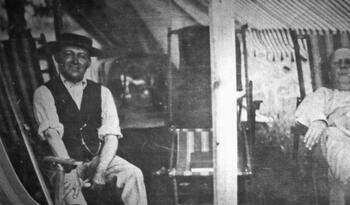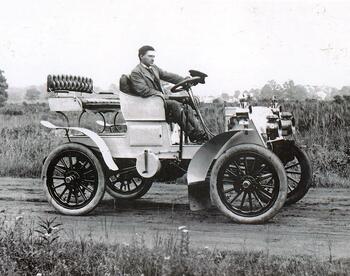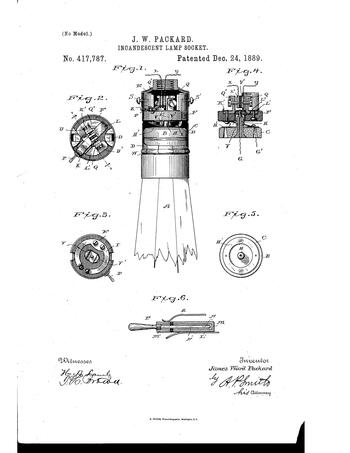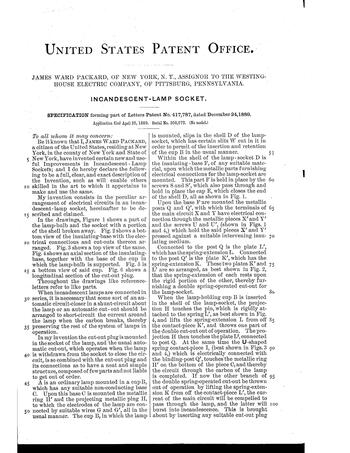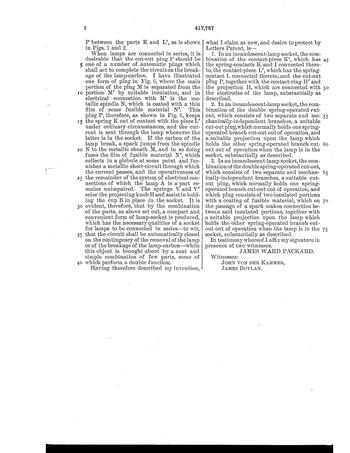James Ward Packard, best known as the founder of the Packard Automobile Company, was born the second child of Warren and Mary Packard on November 5, 1863 in Warren, Ohio. James demonstrated mechanical aptitude as a young student in the Warren public schools. As a child and young man, James joined his family summering in Lakewood, New York where he learned his work ethic from his father. Together, James and his brother, William worked in the family hotel, the Lakeview House, and later James worked in a steam-driven electric light plant while William worked in a telegraph office.
In 1880, James was accepted to Lehigh University in Bethlehem, Pennsylvania. During his years at Lehigh, James spent a great deal of time working on his own engineering projects in his dorm room. He created a magnetic arrangement that connected to the lock on his door, allowing him to open the door with the flick of a switch. He also rigged a telegraph line to a friend’s room and was considered a good operator.
He graduated with a degree in Mechanical Engineering in four years, and after graduation, James went to work for Sawyer-Man Electric Company in New York City, New York. At Sawyer-Man, he gained practical knowledge of the electrical industry and made contacts that would help him in the future. In 1887, Westinghouse Electric Company bought Sawyer-Man and it became the Westinghouse lighting division.
James left Sawyer-Man in 1890 and returned to his home town of Warren and talked his brother into starting the Packard Electric Company with him to manufacture electrical equipment. The Packard Electric Company was closely followed by the New York and Ohio Company, which focused on the production of incandescent lamps. James filed a patent in 1889 for his design for a bulb which addressed the issue of turning on and off the electrical current. The bulb was a predecessor of those we know today; it was threaded, but on a stud at the bottom of the socket.
In 1896, James took an interest in the horseless carriage and wanted to find an alternative to steam or electricity. Three years later, James produced the first Packard Motorcar. A new company was started and by 1902, it was known as the Packard Motor Car Company. William joined his brother in this venture and the company was relocated to Detroit, Michigan. James served as president of the Packard Motor Car Company until 1909 and stayed an additional 6 years as the Chairman of the Board.
On August 31, 1904, James married Elizabeth “Bess” Gilmer. They honeymooned on Chautauqua Lake in Chautauqua County, New York and by 1905 made plans for a home in Lakewood. Construction began in 1911 and by the summer of 1912 James and Bess moved into the house they would share for the rest of their lives.
James was the first to bring an automobile to Lakewood, which cost nearly $1,000 to produce and took about 10 hours to drive the 127 mile trip from Warren. Today the same trip would take about 2 hours.
James and Bess continued to invest in the future of Lakewood for the rest of their lives, including providing land from one of their orchards and $1,500 to build a new station for the Lakewood Hose Company. In 1915, James donated the first automotive equipped fire truck, thought to be the first of its kind in New York State. The truck was a Ford Model T Chemical Fire Truck with a standard Ford Pickup chassis from Detroit which was fitted with a fire tank in Columbus, Ohio. This truck was - and still is - a point of pride for Lakewood. It still runs and is used for special appearances like parades.
James suffered from an extended illness and was a patient at the Cleveland Clinic for the last 16 months of his life. He was 64 years old when he died.
James Ward Packard, date unknown.
James Ward Packard driving an early model Packard motor car.
Fire truck donated to Lakewood Hose Company by James Ward Packard in 1915.
Incandescent-Lamp Socket Patent, April 25, 1889
Incandescent-Lamp Socket Patent, April 25, 1889 page 2
Incandescent-Lamp Socket Patent, April 25, 1889 page 3
